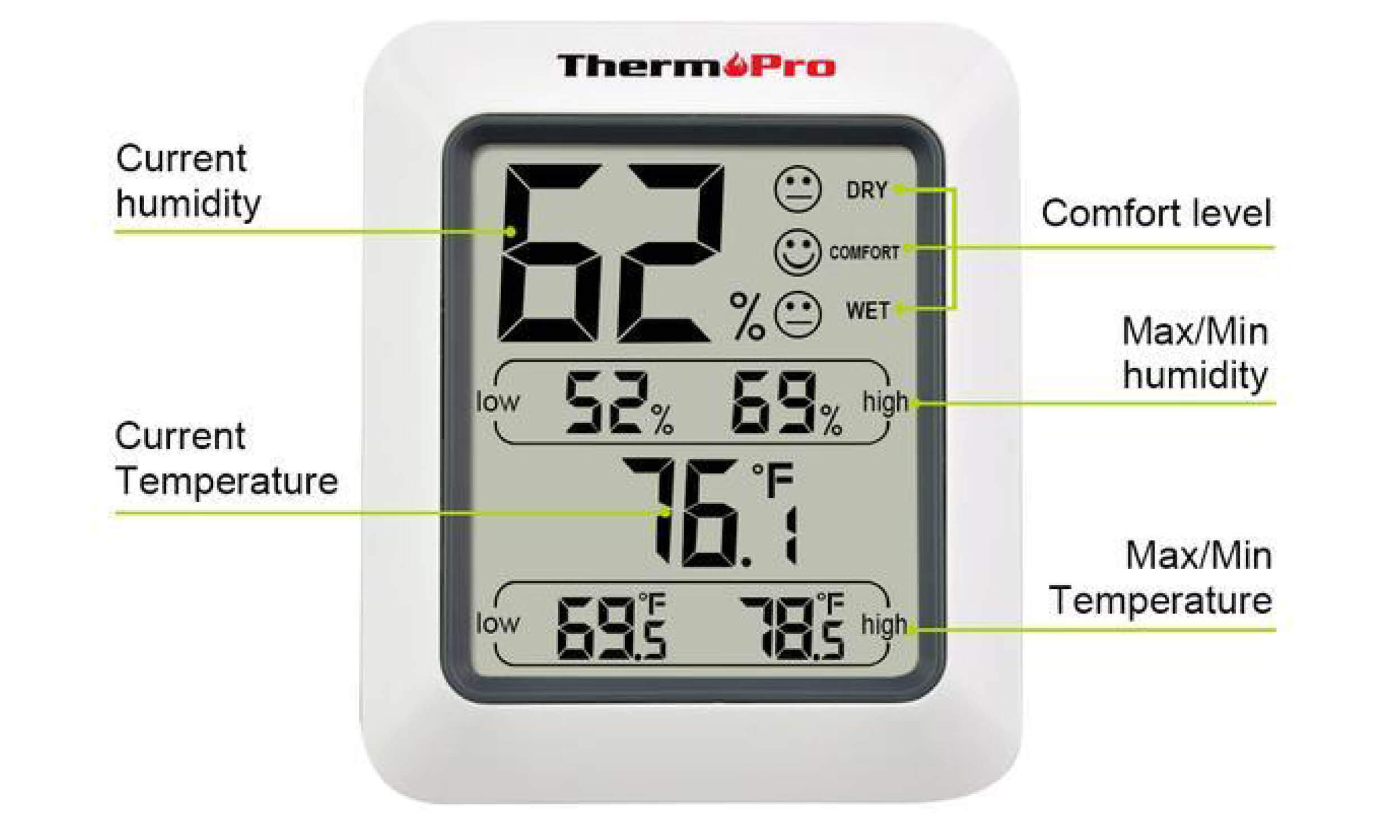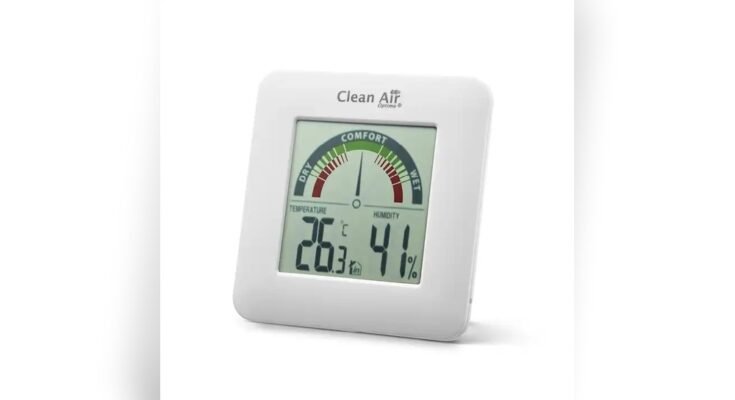Are you staring at your hygrometer and wondering, “Why is my hygrometer reading high?” It’s frustrating when your humidity levels seem off, especially if you rely on accurate readings to keep your home comfortable or protect valuable items. But don’t worry—this isn’t just a random glitch.
Understanding why your hygrometer shows high readings can save you from costly mistakes and help you create a healthier environment. Keep reading, and you’ll discover simple reasons behind those unexpected numbers and easy steps to fix them.

Credit: sustaintrust.org.nz
Common Reasons For High Readings
High readings on a hygrometer can confuse anyone. Knowing why this happens helps fix the problem quickly. Common reasons include where you place the device, how it is set, the temperature around it, and if the sensor works right. Each factor can make the reading show too much moisture. Let’s explore these causes one by one.
Placement Near Moisture Sources
Placing a hygrometer close to water sources raises its readings. Bathrooms, kitchens, or near plants add extra moisture in the air. This makes the device think the whole room is more humid than it is. For best results, keep your hygrometer in a dry spot away from sinks or pots.
Calibration Issues
A hygrometer needs to be calibrated to show correct numbers. Without calibration, it may give false high readings. Over time, sensors drift and need resetting. Use a salt test or follow the manual to adjust your device properly. Regular checks keep the readings accurate.
Temperature Fluctuations
Changes in temperature affect humidity measurements. Warm air holds more moisture, which can trick the hygrometer. If the device is near heaters or windows with sunlight, the readings jump. Stable temperature helps the sensor give better results. Avoid placing the device where temperature changes fast.
Malfunctioning Sensor
Sensors can fail due to age or damage. A broken sensor often shows incorrect high humidity. Dust, dirt, or water inside the device may also cause errors. Clean the sensor gently or replace the hygrometer if it keeps giving wrong numbers. A working sensor is key for precise readings.

Credit: www.acurite.com
Effects Of High Humidity Readings
High humidity readings from your hygrometer can mean trouble inside your home. It affects the air you breathe, your belongings, and your health. Understanding these effects helps you take the right steps to fix the problem.
Impact On Indoor Air Quality
High humidity makes the air feel heavy and damp. It creates a perfect place for dust mites and mold to grow. These tiny pests lower air quality and cause allergies. Breathing moist air can feel uncomfortable and make rooms smell musty.
Damage To Belongings
Wood furniture and floors absorb moisture and may warp or crack. Paper items like books and photos can curl or stick together. Clothes and fabrics can develop a bad odor or even mildew. Electronics are also at risk of damage from excess moisture.
Health Concerns
High humidity can cause skin to feel sticky and irritated. It also makes breathing harder for people with asthma or allergies. Mold spores in the air can trigger coughing and sneezing. Long exposure to damp air may lead to respiratory infections.
Simple Fixes To Correct Readings
High readings on your hygrometer can be confusing. Sometimes, the problem is simple and easy to fix. Small changes can give you better and more accurate results. This section covers easy ways to correct your hygrometer’s readings.
Proper Device Placement
Place your hygrometer away from direct sunlight and heat sources. Avoid areas near windows or vents. Keep it in a spot with good air flow. These steps help the device measure true humidity.
Regular Calibration
Check your hygrometer’s accuracy often. Use a known reference like a salt test. Adjust the device according to the instructions. Regular calibration keeps readings close to the real humidity.
Cleaning The Hygrometer
Dust and dirt can cause wrong readings. Gently clean the sensor with a soft brush or cloth. Avoid using water or harsh chemicals. Clean devices work better and show correct humidity levels.
Using Desiccants Nearby
Keep silica gel packets or other desiccants near your hygrometer. They absorb extra moisture in the air. This helps the device avoid false high readings. Replace desiccants regularly to keep them effective.
Preventive Measures For Accurate Data
Keeping your hygrometer readings accurate needs simple care and good habits. Small steps prevent high or wrong readings. These help you trust your hygrometer’s data every day. Follow easy tips to keep humidity levels true and reliable.
Avoiding Direct Sunlight
Place your hygrometer away from windows and lamps. Direct sunlight heats the device. This causes false high readings. Keep it in shaded, cool spots. Avoid areas with bright light or heat sources nearby.
Controlling Room Temperature
Keep the room temperature steady for best results. Rapid changes in heat confuse the hygrometer. Use fans or heaters moderately to maintain balance. A stable room temperature helps your device give correct humidity levels.
Routine Maintenance Tips
Clean your hygrometer regularly with a soft cloth. Dust and dirt can block sensors and affect readings. Check batteries often if your model uses them. Calibrate your device as per instructions. This keeps measurements accurate over time.
When To Replace Your Hygrometer
Knowing when to replace your hygrometer helps keep your readings accurate. A faulty device can give false high readings, affecting your environment control. Regular checks on your hygrometer’s condition ensure it works well. Understanding signs of wear and cost factors will guide your decision.
Signs Of Wear And Tear
Look for cracks or damage on the hygrometer’s casing. A broken screen or loose parts can affect accuracy. Sticky or slow needle movement shows internal issues. If calibration fails repeatedly, it may be time to replace. Dust buildup inside can also cause false readings. Consistent high readings despite calibration efforts signal wear.
Cost Vs. Accuracy Considerations
Cheap hygrometers may lose accuracy quickly over time. Expensive models often offer better long-term precision. Compare replacement cost with the price of a new device. Investing in a reliable hygrometer saves money on energy and repairs. Consider your need for exact humidity control before replacing. Sometimes, a new device is more cost-effective than repairs.

Credit: www.reddit.com
Frequently Asked Questions
Why Is My Hygrometer Showing High Humidity?
A high reading can result from calibration errors, sensor issues, or environmental factors. Check calibration and placement for accuracy.
Can Temperature Affect Hygrometer Readings?
Yes, extreme temperatures can cause inaccurate readings. Keep the hygrometer away from heat sources and direct sunlight.
How Do I Recalibrate A High-reading Hygrometer?
Use a salt test or follow the manufacturer’s instructions to recalibrate. This ensures precise humidity measurement.
Could Humidity Sources Near Hygrometer Cause High Readings?
Yes, nearby moisture sources like plants or humidifiers can raise readings. Place the hygrometer in a neutral spot.
Conclusion
High hygrometer readings can happen for many reasons. Check your device’s placement first. Avoid placing it near water or heat sources. Make sure the hygrometer is clean and calibrated. Sometimes, the air itself is very humid. Use a few simple steps to find the cause.
Fixing these issues helps get accurate readings. This keeps your space comfortable and safe. Keep an eye on your hygrometer regularly. Small efforts lead to better humidity control.



